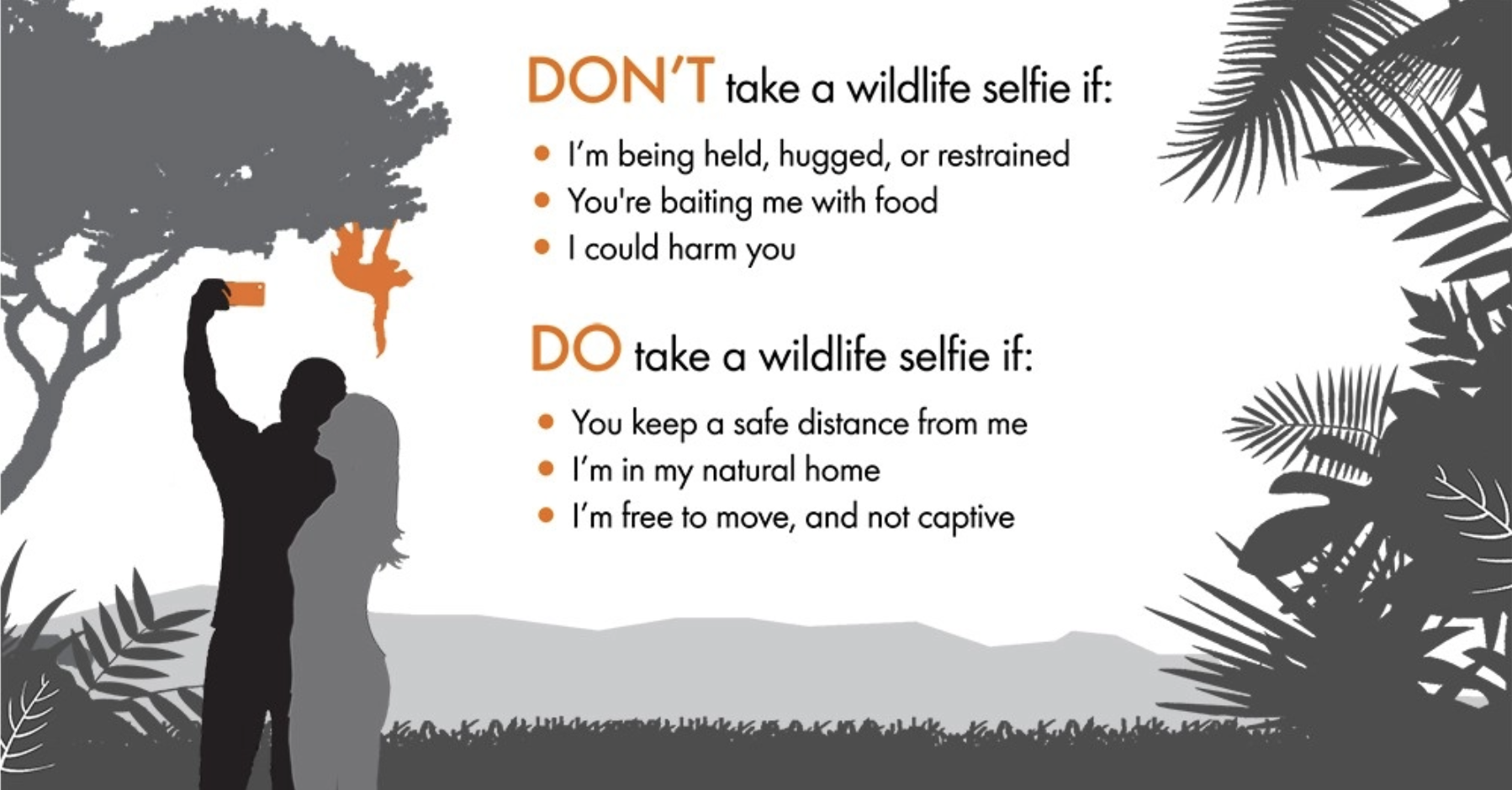The exploitation of sloths, caimans, dolphins, anacondas, and many more wild animals has increased as tourism to destinations like the Amazon has grown. This industry of animal tourism is extremely dangerous and distressing for these wild animals. Don’t be part of this ugly picture: make sure your wildlife selfies are cruelty-free.

What is the Wildlife Selfie Code?
DON'T take a wildlife selfie if:
- The animal is being held, hugged, or restrained
- You're baiting the animal with food
- The animal could harm you
DO take a wildlife selfie if:
- You can keep a safe distance from the animal
- The animal is in their natural home
- The animal is free to move and not captive
The Dark Side of Amazon Tourism
The Amazon rainforest is famous for its diverse wildlife and the number of tourists who want to take selfies with its fascinating animals is rising fast.
Sadly, this has led to the exploitation of numerous wild animal species, including sloths. With their gentle, slow nature, and facial markings that give the impression they’re always smiling, sloths have become one of the main targets for people looking to use them for profit. Despite the increased popularity of sloth selfies across social media, few people consider the conditions these wild animals are in, or the disruption they can cause to their natural habitat when taking the photo.
Many people offering wildlife selfies in the Amazon search treetops for sloths to steal. These typically calm, gentle animals are snatched from their natural habitats, forced to live in noisy, chaotic environments, and repeatedly passed around from tourist to tourist.
Don't be fooled! There's Suffering Behind Selfies.
Most tourists who take photos with wildlife love animals. During their once-in-a-lifetime trips, it’s many people want to take a selfie with a sloth for Facebook or post a picture with a pink river dolphin on Instagram. But if they knew about the suffering these wild animals endure for this type of photo opportunity, they’d put their phones and cameras away.
Our initial investigation showed that among the 34 billion images posted by 700 million people on Instagram, tens of thousands of wild animal selfies exist. These photos capture a moment of shareable joy for people, but the animals’ stress and suffering may be left out of the frame.
Many people envy friends who post selfies of themselves hugging or holding wild animals, which sadly encourages more people to take their own photos.

Instagram’s Amazing Change
On December 4, 2017, after 250,000 animal lovers signed our Wildlife Selfie Code, Instagram launched a new ‘wildlife warning’ page.
When Instagram users search for hashtags like #koalaselfie, #elephantride, and #slothselfie, a message pops up, informing them about the animal suffering behind the photos.
This incredible acknowledgment of wild animals’ suffering from Instagram happened because of our supporters. It’s proof we should never underestimate the power of our voices.
If you’re going on a trip, remember the Wildlife Selfie Code. Only take photos if you’re a safe distance from an animal, they can move freely, and they’re in their natural home.
